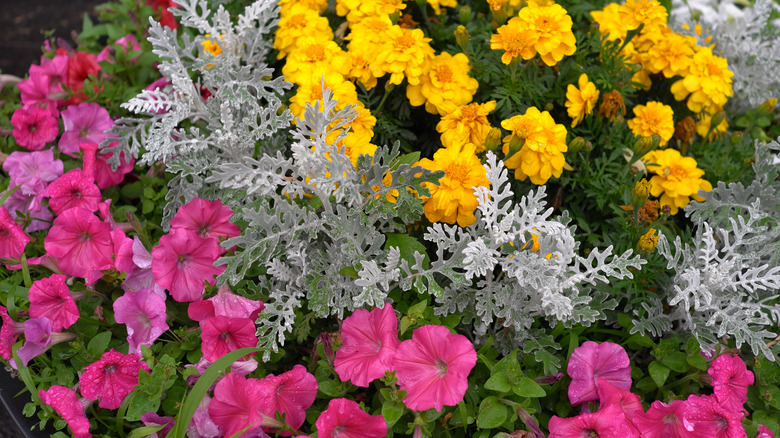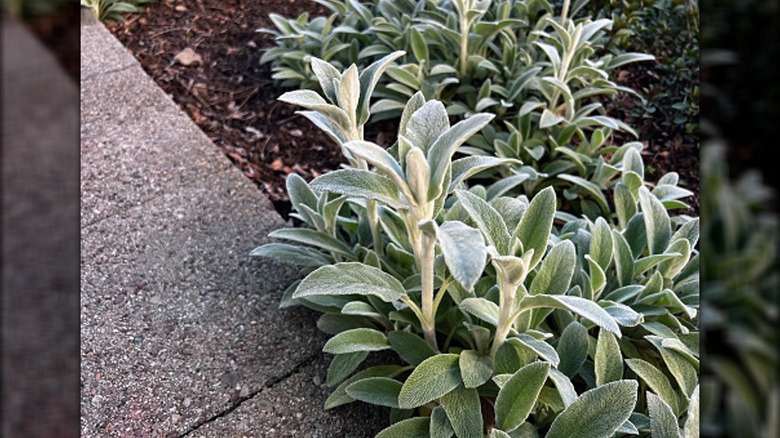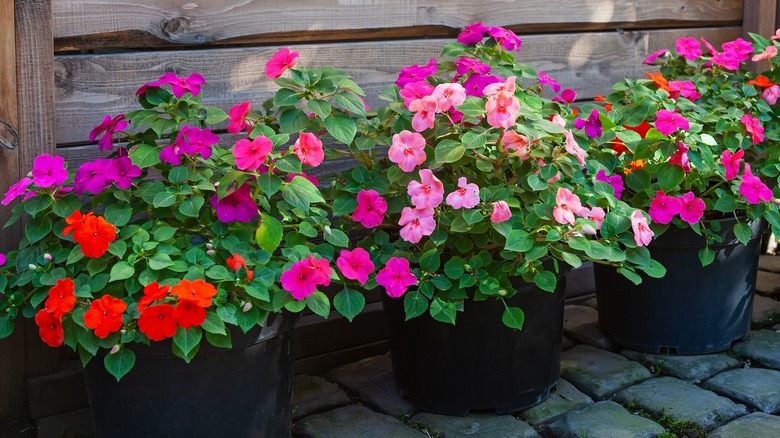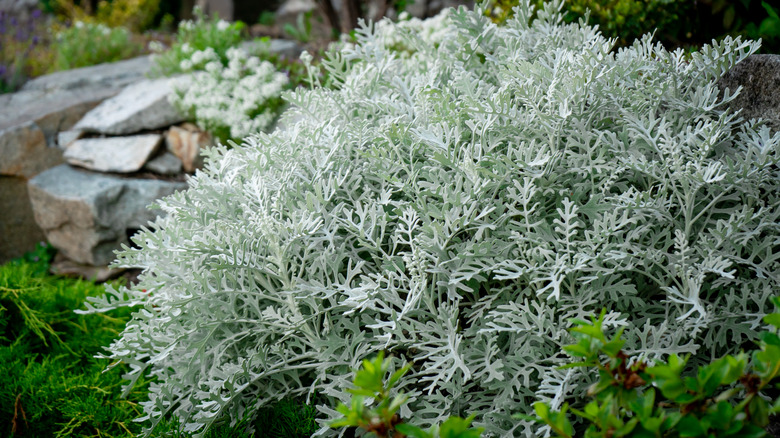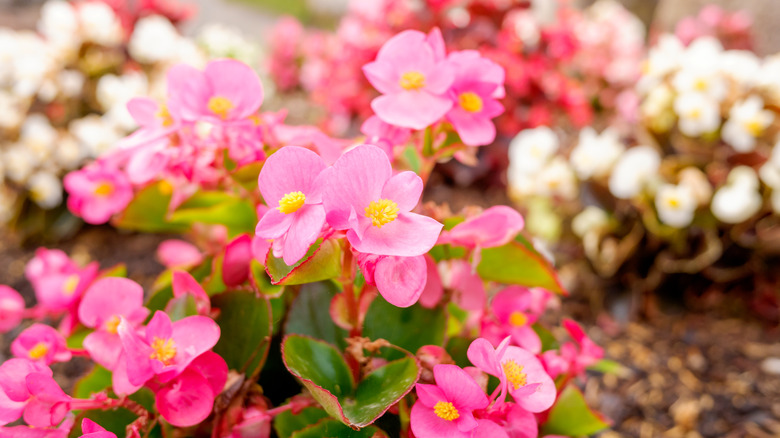4 Common Landscaping Plants That Are Popular For A Reason
Landscaping trends change yearly, and we often want the newest and most interesting plants to boost our curb appeal. There certainly isn't anything wrong with that. I enjoy the fascinating new petunia and coleus cultivars as much as anyone. Most years, I add one or two to my collection of annuals just to keep things interesting. I also love my tried and true plants — the ones I can trust won't be eaten overnight or succumb to fungal issues. In my garden, I can always rely on lamb's ear, impatiens, dusty miller, and begonias to bring color and texture with little to no maintenance.
I know this list might seem a little boring. I mean, these plants are everywhere, right? That's the point. Begonias are practically everywhere for the same reason there's a Starbucks on almost every corner: You know you can rely on them to be consistent. Just because a plant is common doesn't make it dull. There's comfort in knowing you can rely on something, especially in the garden, where very little is guaranteed.
Lamb's ear
There is so much to love about lamb's ear (Stachys byzantina) in the garden. It grows in sun and partial shade, tolerates almost any soil type, and adds a gray, velvety texture to the landscape. When lamb's ear blooms in the summer, my favorite big bumblebees enjoy the nectar provided by the delicate purple flowers. This hardy plant is even deer-resistant, so it's an excellent option for those who are tired of having all their landscaping become a meal for these ravenous animals.
Lamb's ear is a very effective ground cover for areas you don't want to weed. Its spreading growth habit chokes out most weeds, and the shade provided by their thick leaves prevents seeds from germinating. Since it is so prolific, you'll find that it can take over a garden bed pretty quickly, but its shallow roots make it easy to remove when it has overgrown its allotted space. Lamb's ear transplants well by plant divisions, so whatever you dig up can be shared with friends.
Impatiens
Thanks to the large number of mature trees around our house, we have a lot of shade. Impatiens are one of my favorite ways to add bursts of color among my hostas and in planters around our seating area. I love that I can plant impatiens in the spring to get beautiful blossoms in different colors, but they are still tough enough to handle our hot and humid southeastern summers, despite my occasional neglect. Not only are they easy to find in a range of colors, but they are super affordable. I can often find them in packs of six or eight healthy plants for a few bucks. Yes, I always buy more than I have room for (so I buy more planters and on it goes...).
Impatiens do not tolerate full sun, although they do appreciate some early morning rays. If you love the look of these plants but don't have much shade to offer, Sunpatiens (Impatiens x hybrida SunPatiens) are their widely available sun-loving cousins.
Dusty miller
For a while, dusty miller (Senecio cineraria) was in seemingly every landscape. This plant's greyish-white fuzzy leaves are similar in texture to lamb's ears but have an entirely different growth habit. A perennial in zone 7 and warmer, it is generally treated as an annual in the landscape. The name dusty miller encompasses several plants that go by the same common and botanical names, and while they may have slightly different hardiness levels or leaf shapes, they're all similar in color, growth habit, and maintenance. In regions where they do not freeze, dusty miller plants produce clusters of pretty tiny yellow flowers.
Although dusty miller is not particularly striking alone, it pairs beautifully with bold summer blooms and bright green foliage. Native to the Mediterranean region, this plant grows best in full sun but will tolerate some shade. It thrives in drought conditions and is not picky about soil. Consider adding dusty miller to beds full of bright zinnias, petunias, or my next favorite common plant.
Begonias
This is on my list partially because it's so easy to grow begonias in my home. These plants are my favorites because they're so tolerant of neglect and come in many dynamic leaf colors and shapes. Although it is not hardy, I always put my large angel wing begonia outdoors for the summer so she will reward me with gorgeous clusters of dripping red flowers.
For bedding plants, wax begonias are probably the most common and easiest to find. Even within this category, there are way too many to mention. These types grow from 6 inches to 2 feet tall, so the specific cultivars you get will largely depend on where you want to put them. Begonias are lovely edging plants that bloom from spring through fall and come in many colors of blooms and leaves. They do struggle in extreme heat with direct sun, so if you have a flower bed that gets evening shade, you cannot go wrong with one or many types of begonias. I like to mix and match colors, like red and white, to add more color and interest to my containers and flower beds.
